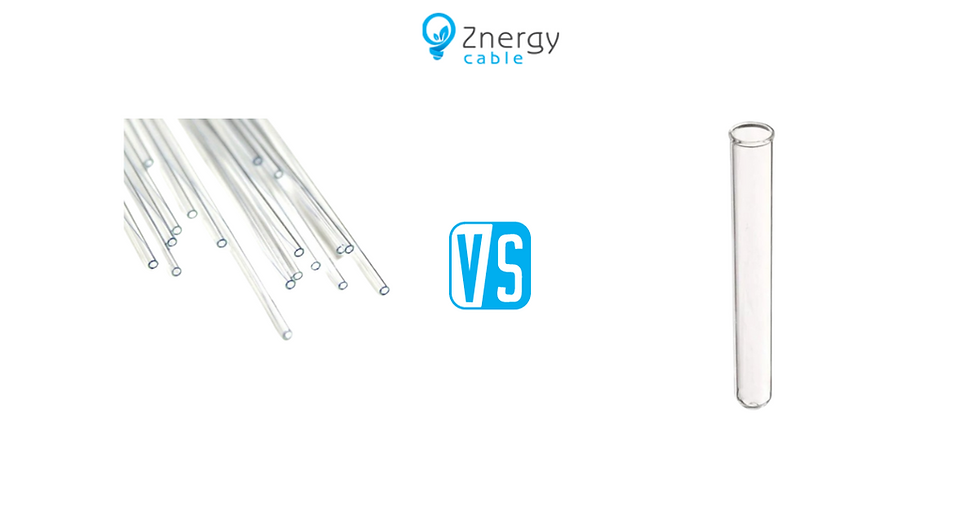What is the Purpose of a Capillary Tube in an Air Dryer?
- znergycableau
- Apr 2, 2024
- 3 min read
In the world of air dryers, the capillary tube is a key component that is essential for the system to work efficiently. It plays a critical role in controlling the flow of refrigerant and managing pressure to ensure effective moisture removal from compressed air. This detailed guide provides a thorough examination of the capillary tube in air dryers, discussing its importance, how it functions, design factors to consider, and where it is commonly used.
Understanding Air Dryers
Before getting into the details of the capillary tube, it's important to understand the wider context of air dryers and their importance in different industrial settings. Air dryers are tools created to eliminate moisture from compressed air, guaranteeing that the air provided is pure, dry, and devoid of impurities. Moisture in compressed air can result in rust, harm to pneumatic machinery, and reduced product quality in production procedures. Therefore, air dryers are crucial for upholding the reliability and effectiveness of compressed air systems in sectors like manufacturing, automotive, pharmaceuticals, and food processing.
The Role of the Capillary Tube
At the core of numerous air dryer setups is the capillary tube, a slim, narrow tube with specific dimensions and setups. The main function of the capillary tube is to control the refrigerant flow in the system, aiding in the cooling and condensation of moisture from the compressed air flow. By managing the refrigerant flow, the capillary tube assists in sustaining ideal operational conditions within the air dryer, guaranteeing effective moisture removal with minimal energy usage.
Working Principle of the Capillary Tube
The capillary tube operates based on principles of thermodynamics and fluid dynamics. When compressed air enters the air dryer, it goes through various components like filters and heat exchangers for cooling and depressurization. Acting as a metering device, the capillary tube limits the refrigerant flow into the evaporator coil. This limitation leads to a pressure drop, causing rapid expansion of the refrigerant upon entering the evaporator. The sudden expansion lowers the temperature, allowing the refrigerant to absorb heat from the compressed air passing through the evaporator coil.
As the refrigerant absorbs heat, it changes from liquid to vapor, effectively cooling the compressed air and causing moisture to condense from the air stream. The capillary tube is crucial in controlling the refrigerant flow rate, ensuring the evaporator functions at the right temperature and pressure for efficient moisture removal. Moreover, the capillary tube helps maintain a consistent level of superheat at the evaporator outlet to prevent liquid refrigerant droplets that could harm the compressor.
Design Considerations for Capillary Tubes
The design of capillary tube is extremely precise and customized to meet the specific needs of the air dryer system. Factors like tube diameter, length, material, and internal geometry are meticulously engineered to achieve the best performance and efficiency. The tube diameter controls the refrigerant flow rate, where smaller diameters lead to higher pressure drops and slower flow rates. Length and internal geometry also impact flow properties, with longer tubes and intricate geometries providing better control over refrigerant flow and pressure adjustment.
Capillary tubes are typically made of corrosion-resistant metals like copper or stainless steel due to their durability and thermal conductivity. The inner surface of the tube might be coated or treated to reduce friction and enhance flow properties. Moreover, the capillary tube could include components like expansion valves or orifice plates to further improve its functionality and effectiveness.
Applications of Capillary Tubes in Air Dryers
Capillary tubes are widely utilized in various air dryer types, including refrigerated dryers, desiccant dryers, and membrane dryers. In refrigerated air dryers, which utilize cooling to eliminate moisture from compressed air, capillary tube are commonly part of the refrigeration system. Desiccant dryers, which employ adsorbent materials to capture moisture from compressed air, may use capillary tubes to regulate the flow of regeneration air or purge gas.
Moreover, capillary tube are integrated into auxiliary components of air dryer systems like expansion valves, metering devices, and refrigerant circuits. Their precise management of refrigerant flow and pressure is essential for achieving optimal performance and efficiency in air dryer operations.
Conclusion
In summary, the capillary tube is a crucial element in the complex system of air dryers, responsible for regulating refrigerant flow, managing pressure, and enabling effective moisture extraction from compressed air. Its detailed design, operational principle, and uses highlight its importance in guaranteeing the dependability, efficiency, and durability of air dryer systems in various industrial fields. By grasping the role and significance of the capillary tube, engineers and operators can enhance air dryer performance, reduce energy usage, and uphold the reliability of compressed air systems in diverse industrial environments.





Comments